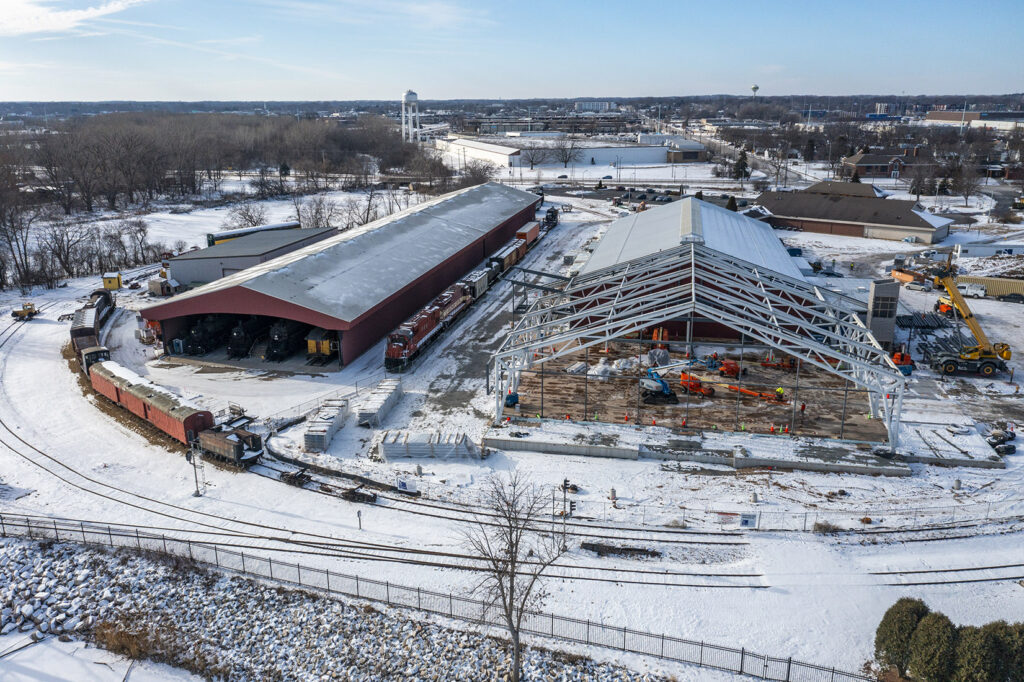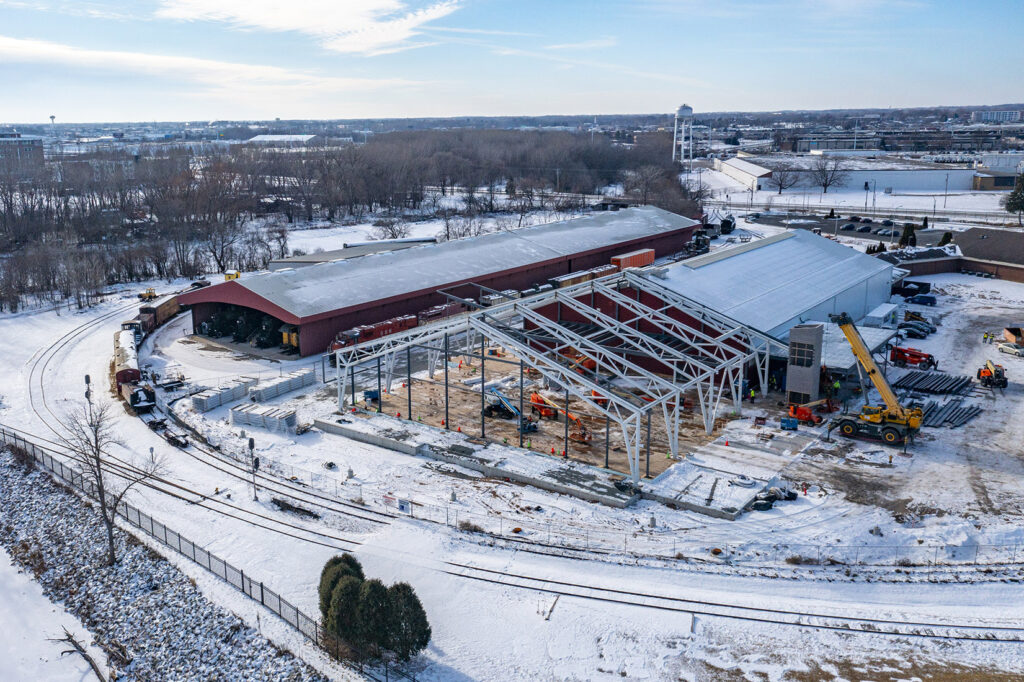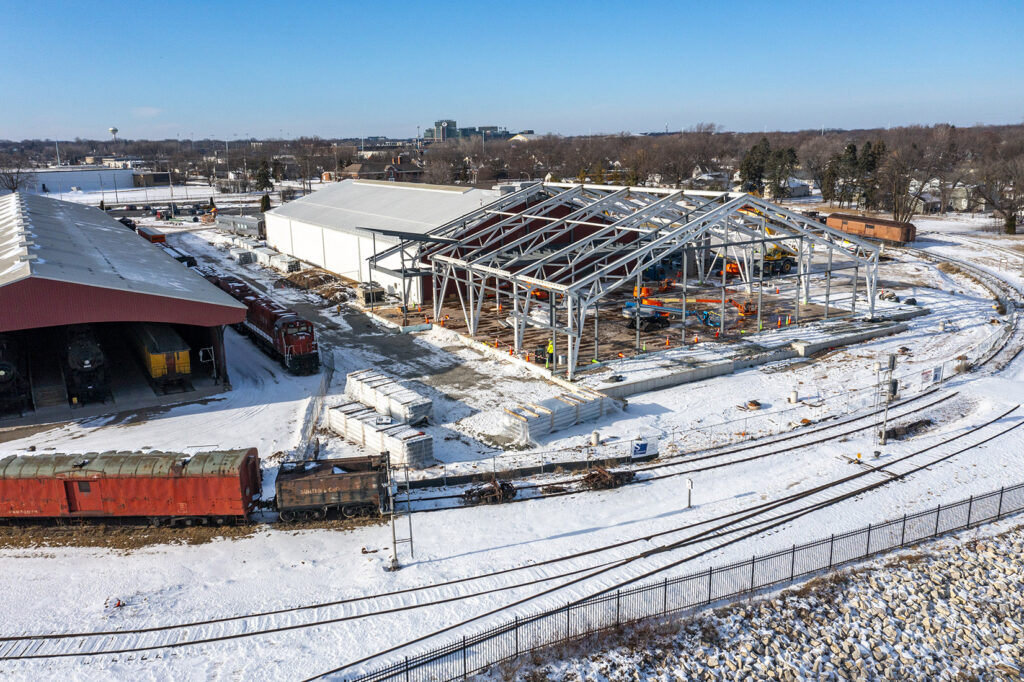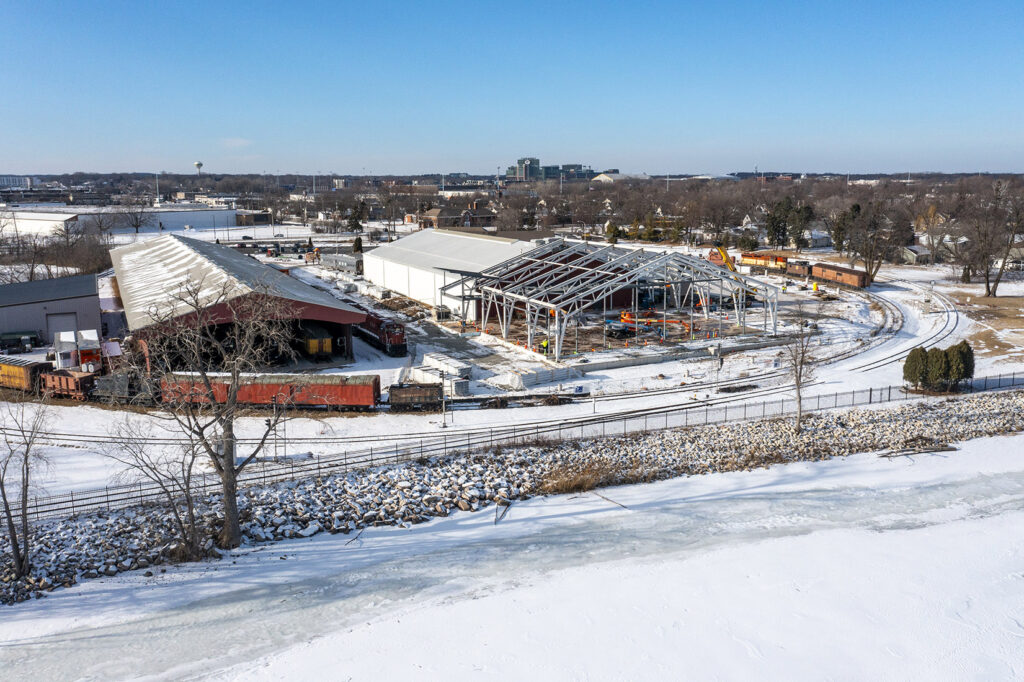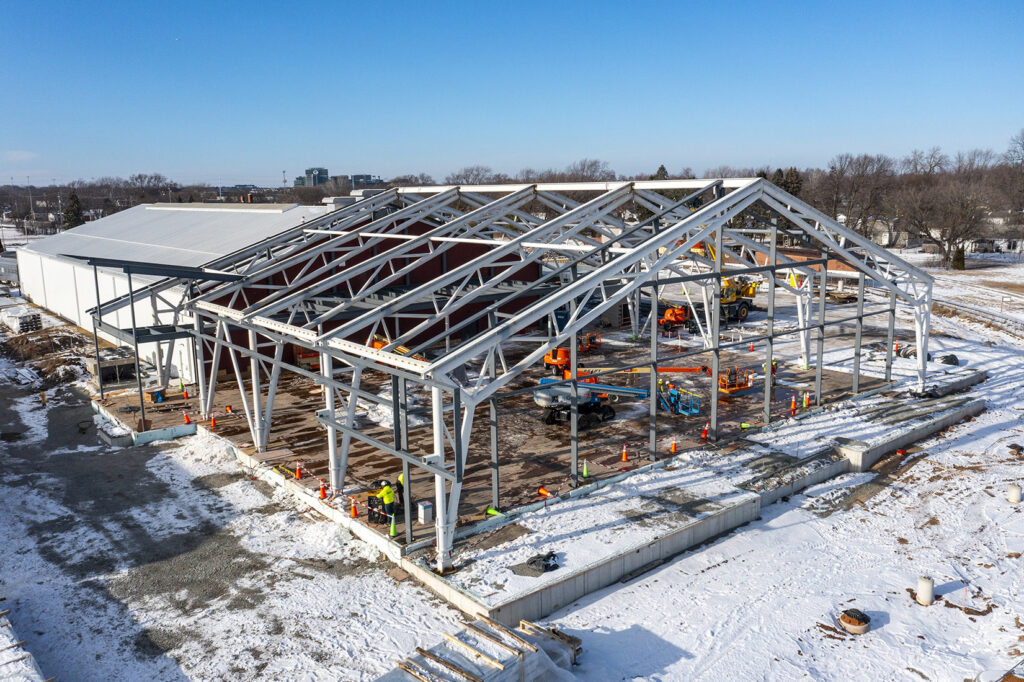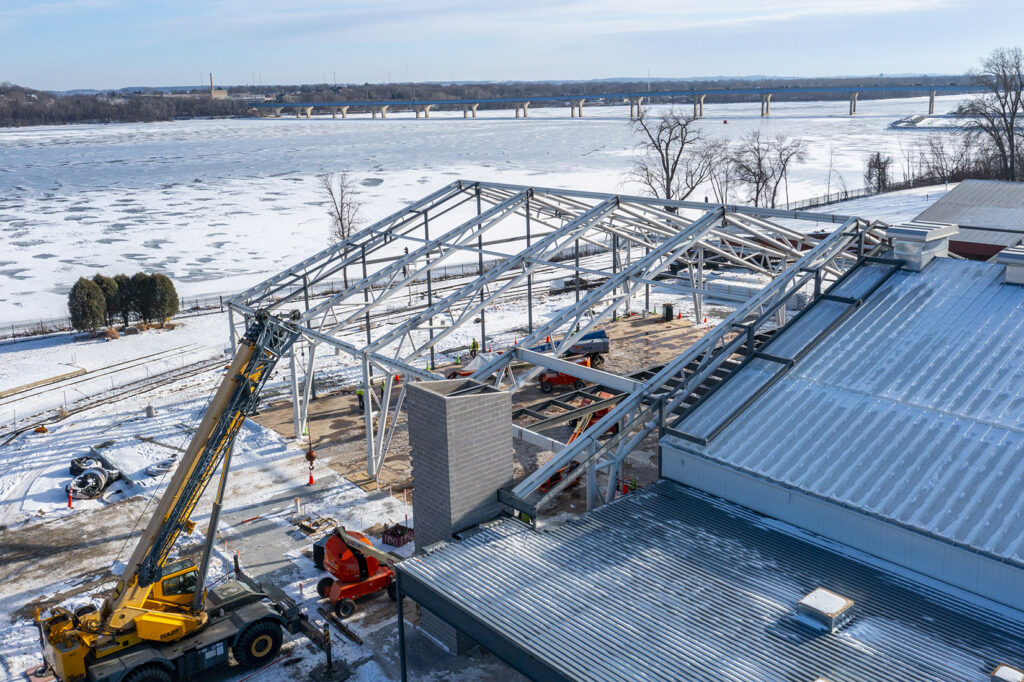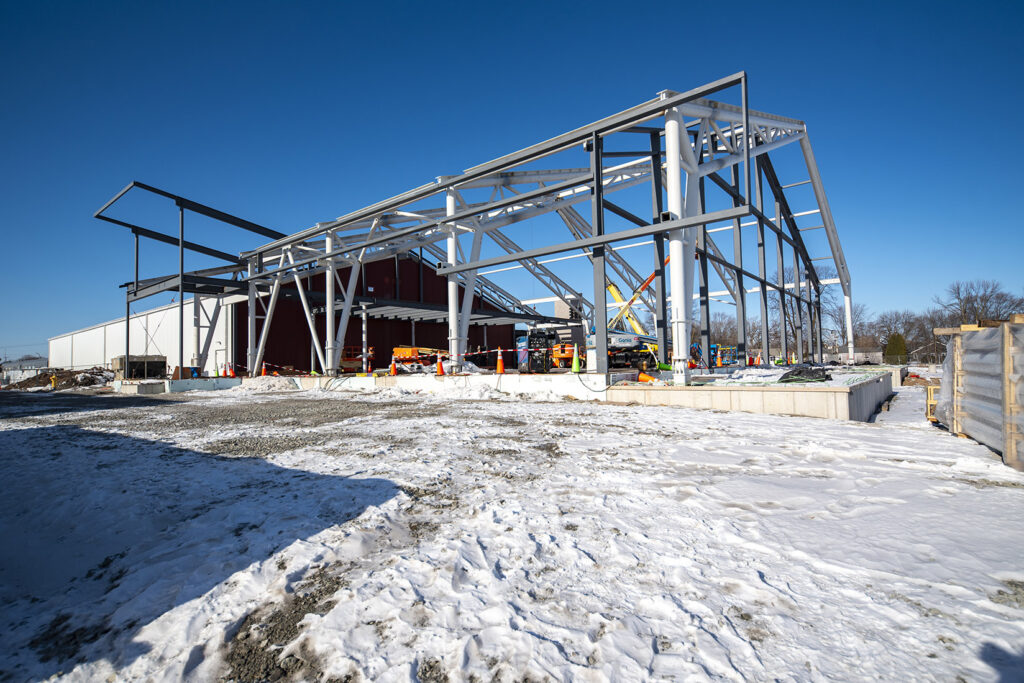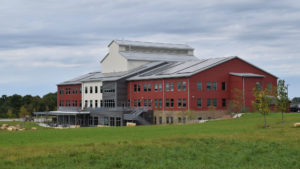Project Overview
The National Railroad Museum in Green Bay, Wisconsin, is the only railroad museum in the United States with a national designation. Established in 1956, the museum houses an extensive collection of over 150,000 artifacts, including rolling stock, historic railroad photographs, manuscripts, and more.
raSmith is providing structural engineering services for a significant expansion of the museum, the first phase of a long-term master plan designed to enhance exhibits, educational opportunities, and visitor experiences. A defining structural feature of the expansion is the three-pin arch system, with pins at the apex and at the foundation connection points. This system incorporates truss elements made of circular steel tubes. The arch’s connection to the foundation is comprised of a custom finite element designed fork-like extension with a hole for a simple pin connection, creating an elegant and highly ornamental aesthetic. Other elements in the building utilized a cast steel similar fork-like end, which not only enhances structural integrity but also adds a visually striking architectural element to the expansion.
The roof deck spans an impressive 28 feet, contributing to the open and expansive interior space while concealing mechanical and electrical systems within its 9-inch depth. What’s equally as impressive is the buried foundations system that addresses the enormous horizontal thrusting action associated with a three-pin arch.
This expansion will enhance the museum’s ability to support its continued growth, increase exhibit and educational spaces, and create more areas for public gatherings. Additional storage and display areas will help preserve the museum’s vast collection for future generations. This project will also transform how visitors engage with railroad history, featuring a large new classroom for expanded educational programming and an adaptable event space for community events, special exhibitions, and private celebrations. The expansion will also allow for four tracks of rolling stock and small exhibits, improving the presentation of the museum’s artifacts.
A striking aspect of the design is its seamless integration with the museum’s riverfront setting. Floor-to-ceiling windows and an expansive outdoor terrace will connect the museum to the Fox River, offering stunning views and an immersive experience.
